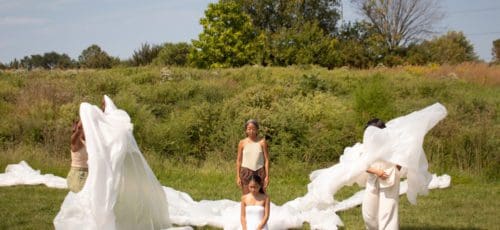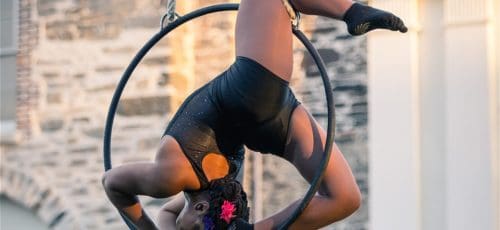Dance Class Dreams in St. Petersburg
Marina Kec is a recent graduate of Bryn Mawr College. She is a dancer and writer living in the Philadelphia area.
This is where I dreamed of studying classical ballet as a child. Far-fetched maybe, but, nevertheless, a goal. I desired nothing more than to become a perfectly manufactured product of the Vaganova Ballet Academy’s world-renowned training technique—a method that, to this day, whittles lithe young bodies into chiseled demigods of the ballet world. For years I fantasized about marching into the school’s majestic dance halls to tirelessly execute ligament-tearing stretches and arthritis-inducing barre exercises. I would concoct ridiculous scenarios where, having nearly reached my breaking point at the end of the semester, I would stare into the eyes of the stone-faced judges grading my final exams and give the performance of a lifetime, proving that I deserved to remain one of the chosen ones. The prestige. The drama. The sacrifice that comes with trying to achieve unattainable physical perfection. I wanted it all.
I did not expect my first dancing experience in Russia’s cultural capital to happen at the ripe old age of 22 in a well-hidden studio tucked behind the doors of a vacant white corridor. Standing at the beginning of a long hallway, I gazed at the cement buckling beneath my feet. Fluorescent lights buzzed from the ceiling. The sharp scent of a chemical I probably should not have been inhaling hung in the air. Where were my enormous sunlit dance halls? The beautiful stained hardwood floors? Agrippina Vaganova’s scowling portrait striking fear into the hearts of generations of young dancers? According to a half-constructed, rarely updated website, the school Kannon Dance resided somewhere in this unwelcoming hallway. How was that even possible? I shuffled past rows of doors, reading posters advertising a trendy photo school that also shared the space. Before I reached the end, I noticed a slight woman scuttle out of one room and quickly disappear into another. So, there were life forms after all. I cautiously followed her into an office, startling her in the process. “Hello there! Uh, where is Kannon Dance located?” I asked in Russian. The woman’s features twisted as she bluntly responded, “No classes today.” Ok then, I guess I will come back some other time.
After the jump: Zumba, and realizing new dreams.
I discovered Kannon Dance while searching online for studios that offered classes that fit my busy academic schedule. I was studying advanced Russian language at St. Petersburg University for the year and was not about to give up my dance training for conjugating verbs and practicing the pronunciation of a soft “l.” To be perfectly honest, I was surprised that Kannon Dance existed at all. The school and company, founded by Vadim Kasparov and Natalia Kasparova in 1997, prides itself on having developed modern and contemporary dance in St. Petersburg—a commendable achievement, considering St. Petersburg’s seeming aversion to anything created after the imperial courts. In addition to its ambitious contribution to the local dance culture, I also appreciated the school’s unique student body. Unlike most dance studios in the city, class participation is not limited to those who intend to become professionals. Students of all experience levels and ages are encouraged to embrace contemporary dance forms. To Western people, this does not seem unusual. We are accustomed to the availability of open and adult classes. Hey, who doesn’t like to indulge in Zumba every now and then? In Russia, however, the concept of dance as a hobby has only recently become a reality. Now, people finally have the opportunity to find enjoyment in the activity without having to train professionally.
I found myself in a starkly different environment the second time I attempted to take a class at Kannon Dance. Dancers lined up impatiently by several studio entrances. A cacophony of contemporary and classical music ricocheted down the hallway. Teachers barked counts: “Raz! Dva! Tri! Chetiri!” Walking past one open door, I realized that the school was outfitted with a black box theater where various troupes, including the Kannon Dance Company, perform weekly contemporary and experimental shows at a surprisingly reasonable price. I could not believe the amount of energy and activity occurring in the same place that had previously been so desolate. Something about this school felt right. I knew it was going to be a good fit.
Over the next nine months, I had the pleasure of taking classes in contemporary choreography, jazz, and classical ballet. I stood out with my unbridled American technique that struggled with the reservation of the Russian style, but I think the teachers and students appreciated the change in pace. At least I hope they did. I always found it strange to consider the proximity of the Vaganova Ballet Academy to Kannon Dance. It was only a twenty-minute walk away. My final night in St. Petersburg I stood before the entrance of the academy, studying the bronze plaque by the door. How many legendary ballet dancers had walked past this piece of metal on their way to class? How many dreamers like me had made the pilgrimage to this spot to entertain a wild childhood fantasy? The truth, though, was that I had changed. This exclusive institution was not real. I had no real connection to it. I had realized my Russian dance persona somewhere else—a place that was accepting and collaborative, where people from all walks of life gathered to enjoy dancing. And I was okay with that.
–Marina Kec




